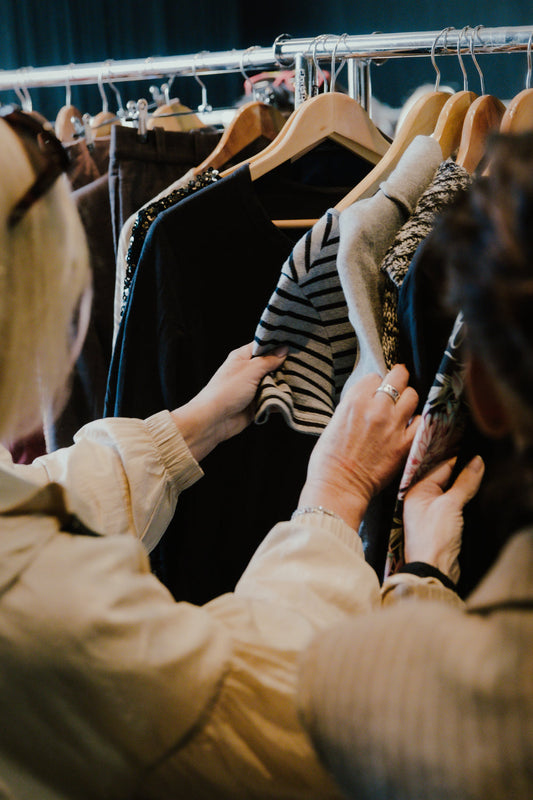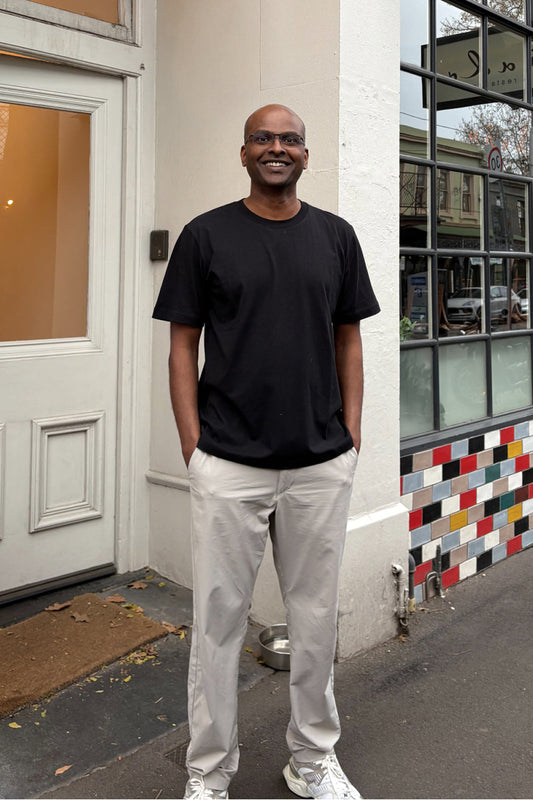Fashion is the second-largest environmental polluter after the oil, gas and energy industry. Unsurprisingly, fashion is now facing the largest zeitgeist driven transition to sustainable practice in human history. However, as consumers it is important to be able to differentiate the grey areas between genuine sustainability, performative sustainability, and unsustainable practices.
TO DO THIS WE HAVE TO UNDERSTAND THAT THERE ARE THREE DIMENSIONS TO SUSTAINABILITY IN FASHION:
1. BEGINNING OF CYCLE
Creation of garment, natural resources, energy, pollutants, and human labour requirements.
2. USE CYCLE
Life and use of the item, alleged brand philanthropy, garment quality, repair, chemical leaching e.g. 35% of synthetic fibres found in deep sea organisms are derived from plastic based fibres.
3. END CYCLE
After use what happens? Recyclability, circular/linear model.
Performative sustainability, also known as ‘greenwashing’ occurs when instead of making a tangible change via addressing the factors related to sustainability (e.g. making supply chains and products sustainable, ethical, recyclable and beneficial to underprivileged communities), businesses instead engage in performative actions that appear to engage and action sustainable practice. However, these marketing ‘performances’ do not lead to direct tangible change or change within the business structure to align with the commitments proposed.
Performative sustainability is most often used by brands when public outcry happens and investors demand a response. This is when ethical and sustainable commitments are made to keep consumers captivated, without resulting progress for an extended time. Performative sustainability also occurs when advertising claims to provide ethical, philanthropic or ecological community benefits but does not follow through with their claims. Alarmingly, social and environmental sustainability is currently not policed and is voluntarily incorporated by companies. This allows performatively sustainable brands to maximise marketing whilst undertaking the minimum possible efforts (if at all) to be ethical or sustainable.
Under this format, brands who are unsustainable, performing sustainability falsely via propaganda are regarded with the same valour as genuinely sustainable brands. Thus, manipulatively reaping social and economic rewards without undertaking any sustainable action or implementation. This kind of malpractice is unfair toward brands that make economic sacrifices to ensure their products are as ethical, sustainable and circular as possible. For example, last year an Australian eyewear brand was under review for claiming to provide a pair of glasses to underprivileged individuals for each pair sold. This became an integral part of the brands marketing strategy and consumers began to prefer the brand for its ethical and sustainable commitments. However, a consumer watchdog found that over five years the company sold 320,000 glasses under the social responsibility premise, however, only provided 3,000 philanthropic glasses in total during that time. The courts concluded the misleading claims had ‘exploited consumers’ desire to support social responsibility, sustainable development and charitable causes.
Performative sustainability is rarely investigated, and since 2018 there have been dozens of fashion brands that have undelivered commitments to ethical and sustainable practices. Some still use endangered Chinchilla & Lynx furs while others, continue human rights and environmental atrocities for profit. Over 66% of fashion executives have not implemented environmental or social factors into their business strategies. Two-thirds of the fashion industry, comprised mostly of small to medium-sized players are the worst unethical and unsustainable practice offenders.
Despite what looks like a bleak, nonchalant outlook, it is naïve to discount the extraordinary behind the scenes innovation towards ethical and sustainable development across the industry led by the largest fashion players, followed by some mid-sized, family owned companies and niche small businesses, who have to date been the trailblazers for practical and ethical sustainability in the market.
It is important to note that the larger the organisation, the slower the rate of progress, as restructure of a company and its processes need to be changed from the inside out at an extraordinary magnitude, across its entire supply chain, whilst solving the puzzle of maintaining quality, testing new materials, keeping costs low and being ethical and sustainable. Hence, it is commendable that a large organisation has committed to acting on circular commitments and funding open source innovative sustainable technologies for smaller players in the market to utilise.
It is important for consumers to differentiate from slow genuine progress versus no progress or ’greenwashing’. In a world of ‘woke’ consumers, genuine sustainability is obvious and transparent, whilst ‘performances’ are shrouded in secrecy, thus immediately called out. Commitment toward genuine tangible change will divide educated consumers throughout the next decades. The profits of sustainable companies will rise, whilst unsustainable companies will plateau or diminish to exist. Destructive capitalism, rabid fast fashion consumerism and inhumane treatment will find its way out of consciousness and wallets. The next decade will see transformation of industry either by choice or by legal force, into one that takes care of the natural world whilst treating all people ethically.
However, it would be unrealistic of me to put the onus entirely on companies and brands without recognising the power of consumers’ responsible decisions creating tangible change as part of a wider interconnected ecosystem. The reason fast fashion is so addictive is because it affects us psychologically. Purchasing an item results in an endorphin feel-good high which wears off after three days, purchasing another item a few days later creates another high and so on 4. As consumers if we resist the addictive urge to overconsume, buy responsibly and less often, brands will eventually start to make losses from a lack of sales, therefore make less product in the next product cycle and so on to remain profitable to demand. In this way collective consumer behaviour can force fast fashion into becoming slow fashion. The same way collective behaviour forced fur out of the mass market and into private boutiques.
Together we are powerful. We must remain critically aware of ‘performative sustainability’, keep pushing our ethical and sustainable agendas until we are heard, and most of all, it is up to us to make responsible decisions. After all, responsible consumer choices lead to responsible action and change across the industry.
ABOUT THE AUTHOR
Recognised by Vogue India in the Most Influential Global Indians List 2019, Zinnia Kumar is a Published Scientist in Human Evolutionary Psychology and Ecology, Alumnus of Brasenose College, University of Oxford in MPhil Modern South Asian Studies program. Zinnia is currently studying MSc in Industrial and Organisational Psychology at the prestigious University College London, United Kingdom. Zinnia is also a CIEEM accredited Ecologist and Conservation Biologist, having worked in the Australian outback with government and non-government organisations carrying out Environmental Impact Assessment’s and large-scale surveys and reports. Zinnia’s work addresses sustainability and environmental impacts.
@zinniakumar
Sydney, Australia & London, United Kingdom
FOOTNOTES
1, 3, 4. House of Commons, Environment Audit Committee, Fixing Fashion Report: Clothing Consumption and Sustainability. 19 February 2019.
2. Boston Consulting Group and Global Fashion Agenda for Copenhagen Fashion Summit in 2017.





